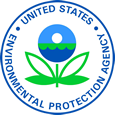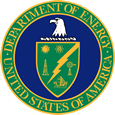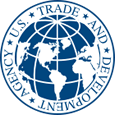What the U.S. is Doing in the Global Methane Initiative
The U.S. government plays a leading role in the Initiative. Several major agencies and departments across the federal government are providing technical expertise and leadership on GMI's Steering Committee and Subcommittees; facilitating communication and outreach activities by serving as the Initiative's Secretariat; and working with other Partner Countries, the private sector, and other organizations to develop and support methane recovery and use projects around the world.
U.S. Environmental Protection Agency (EPA)
Plays a key role in GMI by building on the success of the Agency's methane programs through technical expertise, and hosts the Secretariat, which provides coordination and logistical support for the GMI. Learn about EPA's sector-based methane partnership programs.
Department of State
Leads international climate change policy and activities. Learn more about the Office of Global Change at the Department of State.
Department of Energy (DOE)
Contributes valuable expertise in natural gas and coal mine methane technologies. Visit DOE's International Cooperation website.
U.S. Trade and Development Agency (U.S. TDA)
Facilitates development in emerging markets by promoting U.S. partnerships in high priority overseas projects. Learn how U.S. TDA links businesses to opportunities.
U.S. Department of Agriculture (USDA)
Lends technical expertise in the animal waste management sector. See how USDA supports climate solutions.
U.S. Department of Commerce
Through the Commercial Law Development Program’s Energy and Minerals Team, advises on policy, legal, regulatory, and contractual reforms that will attract responsible investment in abating methane emissions from oil and gas, and has a Handbook for Policymakers with key topics. Explore the Department of Commerce's oil and gas management resources.
What efforts are being made in the United States to capture and use methane emissions?
U.S. industries—along with state and local governments—collaborate with the U.S. Environmental Protection Agency (EPA) to implement several voluntary programs that promote profitable opportunities for reducing emissions of methane. These programs are designed to overcome a wide range of informational, technical, and institutional barriers to reducing methane emissions, while creating profitable activities for the coal, natural gas, petroleum, landfill, and agricultural industries.
Many of the available methane emission reduction opportunities involve the recovery of methane emissions and use of the methane as fuel for electricity generation, on-site uses, or off-site sales of methane. For example, in the case of coal mining, methane is removed from underground mines either in advance of mining, during mining activities, or after mining has occurred to reduce explosion hazards. Instead of releasing this methane to the atmosphere, profitable uses for the methane can be identified and implemented. Some of these options include natural gas pipeline injection, power production, co-firing in boilers, district heating, coal drying, and vehicle fuel.
- Learn more about methane reduction opportunities and EPA’s voluntary programs for agriculture, coal mining, landfills, and oil and gas.
- Visit the United States' GMI Partner Country profile.
What contributions has the U.S. made to the Initiative?
Please see the latest U.S. Government’s Global Methane Initiative Accomplishments report for a summary of the contributions of participating U.S. government agencies and highlights of projects and activities.






